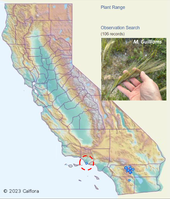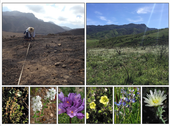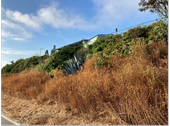- Author: Thomas J Getts

****
Students, it is the time of year to apply for the CWSS Student Scholarship! Awards will be given to both graduate and undergraduate students ranging from $1,000-2,000. Any students interested in Weed Science should apply! Click here to submit an application and for further instruction.
****
This year in January at the California Weed Science Society (CWSS) annual conference, we had numerous outstanding students present their...
- Author: Justin Valliere

Keep an eye out for this potential problem weed in southern California: Stipa capensis. First reported in 1995 in Riverside, this species is native to the Mediterranean and has established in the Coachella Valley of the Sonoran Desert. It is spreading rapidly in the Palm Springs area, forming dense monocultures. Confirmed reports have recently been made in Borrego Springs and Point Mugu. It has the potential to promote fire in California desert ecosystems and may also suppress native wildflower abundance in the areas it invades.
How to spot...
- Author: Justin Valliere

Wildfire is an important ecological process that shapes patterns of plant diversity in many Mediterranean ecosystems, including California. In coastal sage scrub and chaparral, for example, plant diversity is often highest in the growing seasons immediately after a site burns, with many fire-following species emerging from the soil seed bank and bud bank. This often results in spectacular displays of wildflowers when sufficient rainfall occurs following fire.
In a recent study published in Global Change Biology, however, we found that persistence of these unique, fire-following wildflowers may be threatened by invasive plant species as well as nitrogen...
- Author: Luca Carmignani
- Editor: Karey Windbiel-Rojas
- Editor: Belinda Messenger-Sikes
- Post: Gale Perez

How can weed control help with wildfire preparedness?
Wildfires are part of California's ecosystems, and they do not have to lead to the destruction of structures and livelihoods. Each of us can contribute to improving wildfire resilience, from individual homeowners and businesses to entire communities. Managing the vegetation and landscape around our homes can play a crucial role in preventing the spread of fires and sources of ignition.
Given the large amount of rain in the winter of 2022-2023, you might have experienced a surge in annual grasses and fast-growing plants that cover most of the ground around your home and community. In my area, I observed invasive species like wild oats and mustard...
- Author: Trina Kleist
- Posted by: Gale Perez

Auto emissions 'fertilize' fuel
Joshua trees burning in the Mojave Desert are the victims of changing patterns of wildfire, fueled by the spread of grasses that are not native to the region, restoration ecologist Justin Valliere told media in recent interviews.
In late July, Valliere was still settling into his new job at the Department of Plant Sciences when the York Fire erupted in the Mojave National Preserve in southern California. The area includes the western range of the Joshua tree, a unique type of yucca that has...


